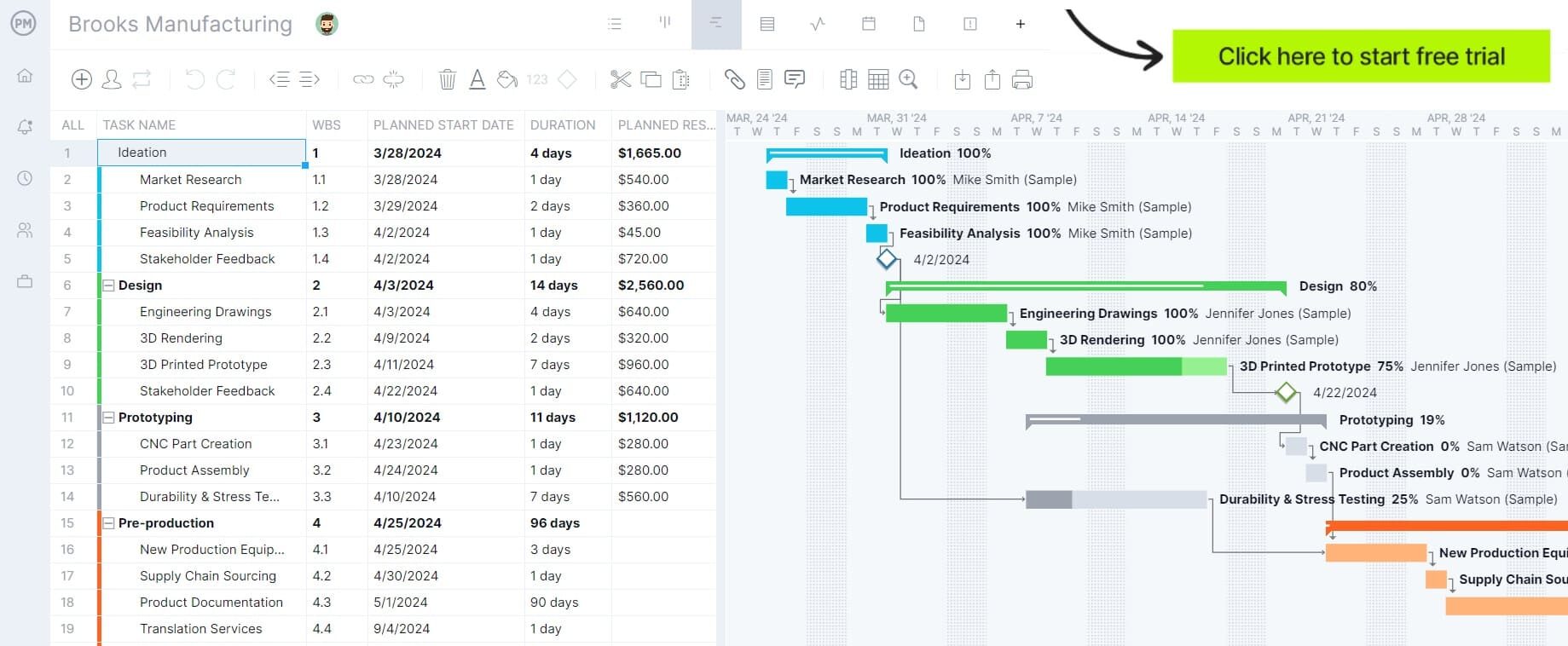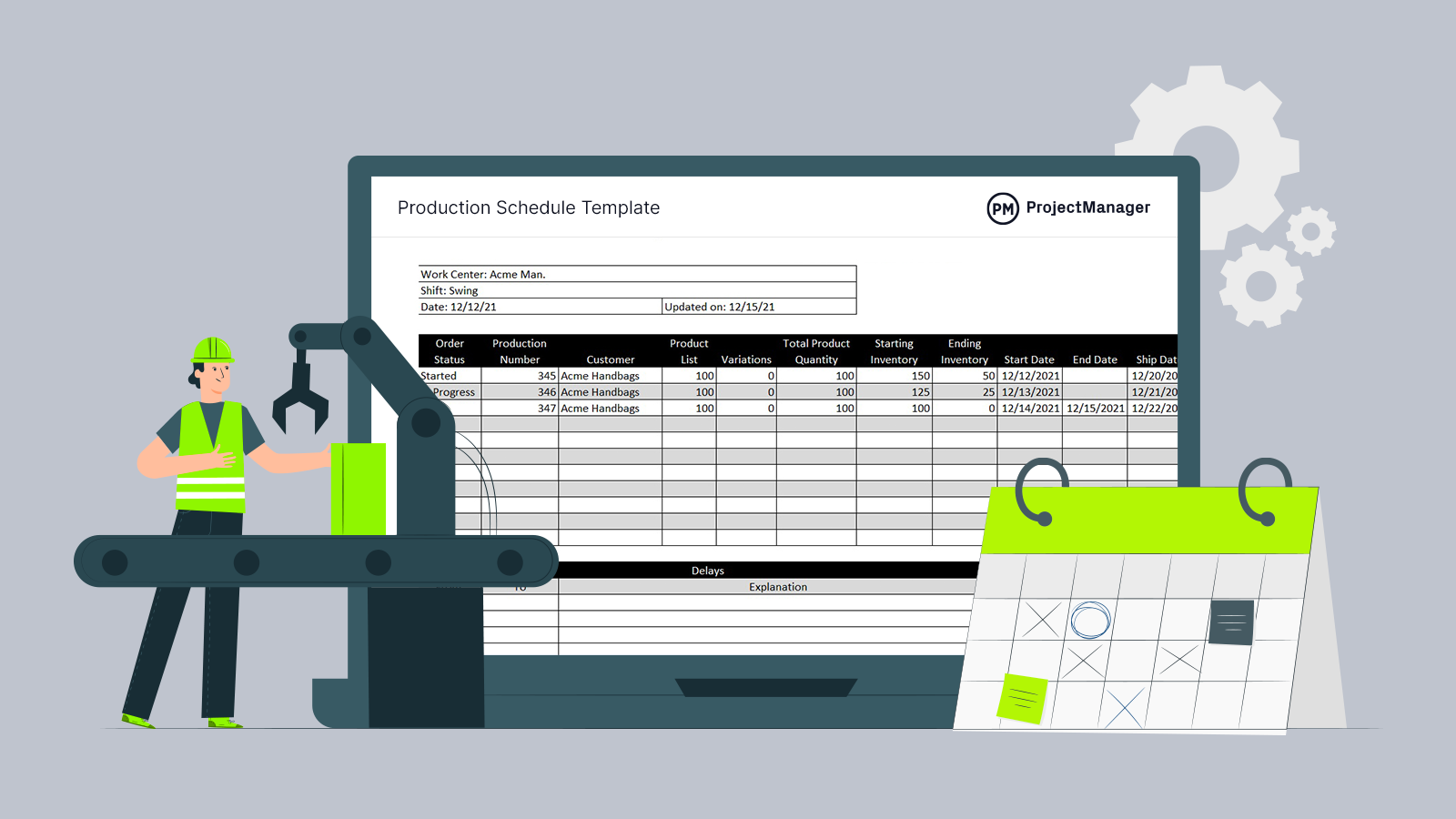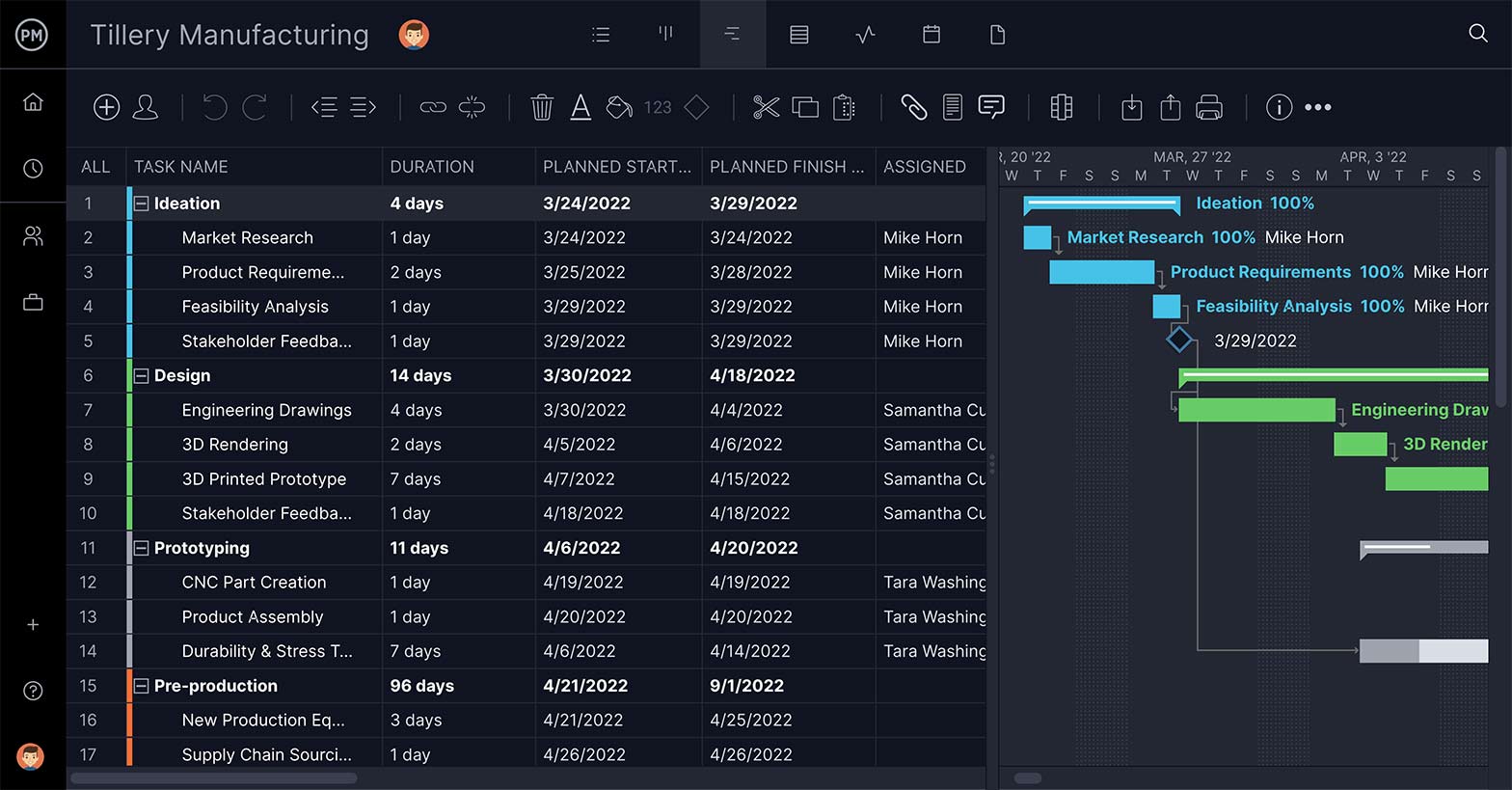Manufacturing requires an understanding of production, its phases and when you need to assemble the product you’re building. Mapping this out with a production flow chart ensures a more seamless process.
What is a production flow chart? We’ll get to that shortly. We’ll also show you how one works and even provide you with an example to see a production flow chart in action.
What Is a Production Flow Chart?
A production flow chart is used to illustrate the manufacturing process of a product. It shows the stages, equipment used and quality control checks where you’ll check the product to ensure it meets quality expectations. If the quality is lacking or there has been any damage en route, these errors will be corrected before returning to production.
Through this mapping process, manufacturers can build a more efficient ordering process for their production line. The product flow chart is a visual representation of that process and can be easily shared. Because of the nature of its simple design, it’s also easy to read and understand at a glance.
A production flow chart sets up the sequence of the production of a product. It records all events using symbols to represent different stages or equipment and helps production managers improve manufacturing speed and quality. Production flow charts are easy to create by hand or with software tools.
ProjectManager is online software that turns production flow charts into workable manufacturing plans. Set up the flow chart on our award-winning Gantt chart and break your production cycle into distinct phases. The Gantt chart is a great way to add a time dimension to your flow chart to show when each step will occur. This makes it easier for managers to schedule and allocate resources. It takes a static production flow chart and turns it into an actionable plan to keep the production flowing smoothly. Get started with ProjectManager today for free.

How Does a Production Flow Chart Work?
The production flow chart works as a visual production management tool. It’s a picture that illustrates each step of a process in sequential order and it’s used for defining or analyzing new processes, standardizing or redesigning existing processes and finding ways to improve processes by removing unnecessary steps, bottlenecks, etc.
A flow chart is illustrated with symbols and each has the following meaning:
- An oval means the start or finish of the process
- An arrow represents the direction of the process from one step to another
- A rectangle represents a process
- A diamond is a decision on an activity
- A D-shape means delay or wait
- A rectangle that curves up on the bottom right side represents that supportive documents are required
- A rounded-edged rectangle is sometimes used as the start or finish of a process.
There are two common types of production flow charts, high-level and detailed. The former works as a macro view of production planning usually only featuring six to 10 phases or steps and focusing on the major blocks in a process. It’s used mostly to identify improvements.
The detailed flow chart as its name suggests goes into greater detail or a micro view of the activities in your master production schedule. These flow charts are at least 15 phases or steps long and often much more than that. They’re good for finding steps that can be weeded out of the process and are mostly used when standardizing or modifying an existing process.

Get your free
Production Schedule Template
Use this free Production Schedule Template to manage your projects better.
Get the template
Production Flow Chart Example
To better understand a production flow chart, let’s look at an example and illustrate what that process looks like in a production flow chart for a typical manufacturing cycle. It starts with customer demand which leads to figuring out the design required. From there, the product is designed to meet those requirements.
Now you have to buy materials to build the project. When those materials are received, you first have to inspect them to make sure they’re useable. If they are, you’ll want to document the inspection results so you can then manufacture the product. If not, you have to return them to the vendor from which they were purchased and wait for a replacement shipment. When it arrives, return to the verification activity and follow through until it passes.
Once you have the product built, verify it meets the product requirements and the inspection results. If it doesn’t pass inspection, it has to be fixed and inspected again until it passes. If it does pass, then you have to package and ship the product. Finally, the last step is to have service support if necessary. That’s a simple production flow chart, which is illustrated below. As you can see, the product flow chart makes it quickly digestible and easy to follow, which is the point of having a production flow chart.

How to Make a Production Flow Chart
You know why a production flow chart is important and you’ve seen how it works in our example of a production flow chart. Now, let’s take a look at how you make a production flow chart.
1. Identify Tasks
First, you have to know all the tasks in the production process, everything from start to finish. You must be thorough or you’ll have to start again. Take time with this first step and include your production team to help you outline the steps.
2. Add Details to the Tasks
Once you have the tasks listed, you need to attach the team members who are responsible for those tasks. You’ll also need to identify any variables and events that might deviate the process.
3. Check Your Work
It’s critical that you get these first steps right. Once you’ve completed them, it’s important that the key stakeholders review your outline. They’ll help you make sure that what you collected is accurate. If it’s not, you’ll need to revise these first two steps.
4. Make Your Flow Chart
Once you’ve gotten the okay from your stakeholders, you can begin to draw your production flow chart. Use the symbols listed above to map out the production flow chart by hand or use online software or project management software.
Production Schedule Template
Once you’ve mapped out the tasks that are required to manufacture a product and you’re ready for production, you’ll need a production schedule. This free production schedule template for Excel helps you keep track of the status of production orders, starting and ending production inventories and important due dates.

When to Use a Production Flow Chart
There are many applications for using a production flow chart. It’s designed to help you understand the manufacturing process, which leads to seeing where and how you can improve those processes.
Not only will a production flow chart help you to better understand your manufacturing process and improve it, but it’s a great communication tool. The visual aspect of the production flow chart makes it easy to show everyone on the team how the process is being executed. This helps everyone know what they need to do.
Production flow charts are a great way to document a process, but they’re also valuable when you’re planning a project. They can help you discern the best processes to get your product to market fast while keeping to your quality expectations.
Advantages of Using a Production Flow Chart
A production flow chart is great for communicating process improvements and sharing them with both your team and management in a clear and easy-to-understand presentation. They can turn a complicated process into a clear visual asset.
The production flow chart also helps with analyzing issues in your manufacturing process. It can help you pinpoint where you reduce costs and save time. You can look at each step in your process and identify areas that are wasteful. By eliminating them you can increase your productivity.
Also, production flow charts are good for project documentation. They capture processes in a way that everyone can understand and can be shared across departments. This helps bring everyone together when it comes to cleaning up wasteful processes. It also explains why the process is the way it is, which is helpful to keep everyone on the same page.
Disadvantages of Using a Production Flow Chart
A production flow chart is without its problems. For example, if you have to change the production flow chart, you’ll have to redraw it. Any small change to one of the steps requires a full rewrite of the document, which is time-consuming and frustrating.
Also, if you’re dealing with a complex process, the production flow chart could end up cluttered and difficult to understand. If the production flow chart can’t be read easily, its production planning benefits are lost. When making one, think about steps that can be combined or simplified.
You’ve probably already noticed that the symbols on a production flow chart aren’t on your keyboard; you have to either draw them by hand or use software that allows you to create those symbols. That means it can be difficult to make a production flow chart and share it.
ProjectManager and Production Planning
If you use project management software, then you can take the lessons of a production flow chart and add them to your planning. ProjectManager is software that helps you plan, manage and track your production. You can easily share plans and when changes are required, they can be simply added and everyone’s plan is updated at the same time.
Plan on Robust Gantt Charts
A production flow chart is going to be of great assistance when planning your manufacturing production cycle. You can easily turn that flow chart into a Gantt chart, which organizes all your steps, links dependencies to avoid bottlenecks and filters for the critical path. You can also add milestones such as when you need documentation. Once you set the baseline, you can track your planned progress against your actual progress in real time to help you stay on schedule.

Track Progress With Real-Time Dashboards
When you set the baseline on the Gantt chart, you can toggle over to the live dashboard, which collects real-time data and displays it on easy-to-read graphs and charts. The real-time dashboard gives you a high-level view of production, from costs to workload and more. There’s no setup required, it’s ready when you are.

When you want to get more information, use our customizable reporting features. You can filter each report to show only what you want to see. Quickly generate reports on status, timesheets and much more. Reports can also be used to keep your stakeholders and management updated.
Related Content
ProjectManager is software that helps you manufacture more efficiently. It’s also an online hub for all things project management. We publish new blogs weekly and have informative guides and tutorial videos as well as free templates. Here are just a few links to some of that content.
- Production Schedule Template
- How to Create a Master Production Schedule (MPS)
- Production Planning in Manufacturing: Best Practices for Production Plans
ProjectManager is award-winning software that helps you plan production more efficiently. Our tool lets you plan your production cycle and manage it while keeping track of its progress and performance in real time. Get started with ProjectManager today for free.


